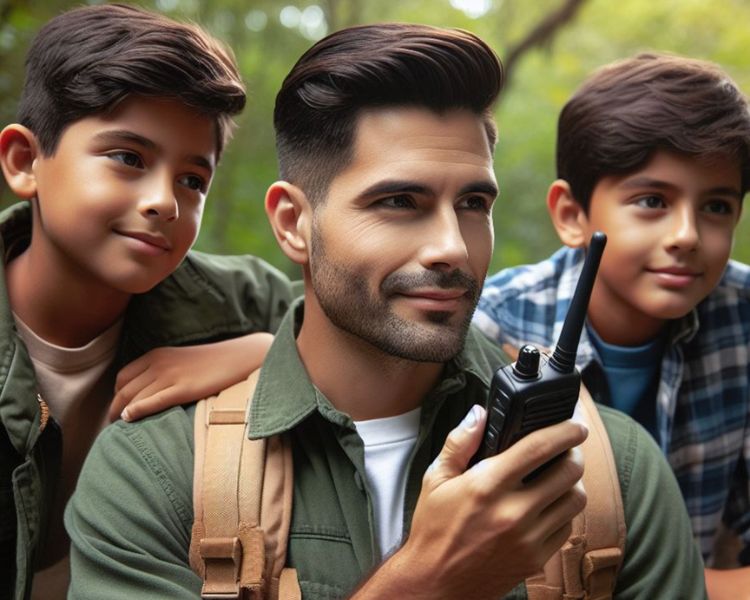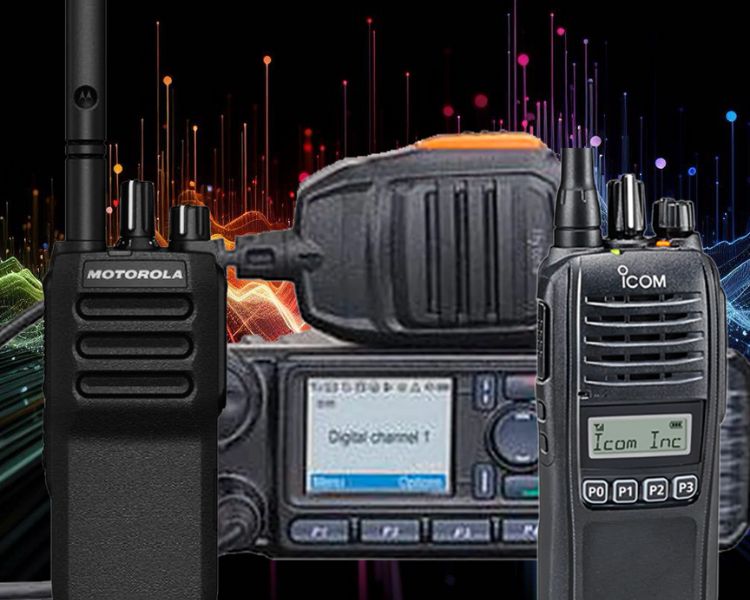
The Best Radio Equipment Features for Long-Distance Truckers
, by Joseph Gabriel, 5 min reading time

, by Joseph Gabriel, 5 min reading time
Communication is of the essence! Use the following list to find out the best radio equipment features that will benefit long-distance trucking.

Long-distance truckers need communication equipment that works over long distances and is straightforward to use, like two-way radios. Truckers can use the push-to-talk button on the radio and communicate a voice message that transforms into an electrical signal. Then, the signal travels as radio waves to other two-way radios tuned into the same frequency. The receiving device converts the signal into sound waves, and the recipient can hear the message and respond instantaneously, despite the distance.
The key to managing the unexpected on the road, staying on schedule, and keeping out of harm’s way is through reliable communication tools. Truckers need the best radio equipment that sustains every conversation on their journey. Read about the features long-distance truckers must have in their stellar radio technology.
The power output is the underlying source of long-distance radio communication. The average walkie-talkie uses anywhere from 0.5 watts to 5 watts of power based on the model. Truckers need two-way radio equipment with a power output of 20–50 watts. This range balances reach and reliability without draining the radio’s battery. It’s also within the range that provides a strong enough signal to overcome natural obstacles in the surrounding environment and maintain clear communication across various terrains.
When considering the power needs of a trucker’s radio, it is important to factor in the limitations set forth by the Federal Communications Commission (FCC). The lawful power limit for handheld two-way radios is typically 5 watts, while vehicle-mounted units are allowed higher power levels, generally up to 50 watts. These regulations ensure all users operate within a standard spectrum without causing interference to other communication devices.
A powerful speaker ensures radio users can hear messages clearly over the roar of the engine and the hum of the highway, reducing the risk of miscommunication. It’s not just about volume; the speaker must also prevent distortion and maintain sound fidelity in all environments. Many modern radios for trucking have noise-canceling features that filter out ambient noises and ensure clarity.
Furthermore, the speaker must be durable; it should withstand the constant vibrations and conditions of life on the road. Look for radios with speakers made from high-quality materials that can endure the rigors of long-distance trucking.
Having both UHF and VHF at your disposal is vital for trucking communication. UHF (ultra high frequency) radios operate at frequencies between 400 and 512 MHz; they can penetrate urban environments and steel structures. The short wavelengths can navigate complex landscapes and enclosed areas more effectively than VHF signals. UHF radios are excellent for inter-city deliveries where buildings might obstruct communication between other radio types.
VHF (very high frequency) radios operate at lower frequencies, ranging from 136 to 174 MHz, which are ideal for outdoor environments with few obstructions. The longer wavelengths travel further in open spaces, making VHF radios perfect for use in rural or undeveloped areas where little to no structures impede line-of-sight communication. Truckers that primarily navigate expansive landscapes like farmlands will favor the practicality of VHF radios.
Dual-band radios enable truckers to switch between frequencies and adapt to varying environments. These flexible tools ensure truckers maintain coverage, no matter their location.
Truckers cannot communicate over long distances without radios that have long and sturdy antennae. A long antenna generally provides better reception than a shorter one, as it can pick up weaker signals and transmit at greater distances. However, you must consider the practicalities of trucking; the antenna should not be so long as to become cumbersome or sustain damage from low-clearance obstacles.
Telescopic or flexible antennae offer an excellent compromise. You can extend them for improved reception and retract them when not in use or when navigating tight spaces.
The quality of the antenna is as important as that of the two-way radio unit. The material should be sturdy enough to handle sun exposure, rain, and debris from the road. Its design should minimize the need for frequent replacement, so truckers can maintain communication under diverse operating conditions.
Talking and listening aren’t the only actions you can do with a two-way trucking radio. It should also have a clear, easy-to-read screen. The best radios have screens with high-contrast displays and large characters that drivers can see at a glance, eliminating the need to adjust the radio while driving, which can distract drivers from the road. This design promotes safety by allowing truckers to easily monitor the status of their communication equipment.
The user interface of your radio must be intuitive and allow you to navigate channels or settings easily. An overly complicated interface can be tricky to use and cause ample frustration when you are trying to respond to transmissions.
Touch screen options are popular due to their ease of use; however, many truckers prefer tactile buttons because they can operate them by feel without taking their eyes off the road.
A radio system that is simple to mount and maintain saves valuable time and ensures the trucker can quickly address technical issues. Many truckers appreciate radios with user-friendly mounting steps that include the necessary components, such as brackets and screws, and require minimal installation tools.
Some drivers love the ease of magnetic mounts. They are simple to remove or adjust on a whim without compromising the stability of the radio unit.
Two-way radios should be easy to operate, mount, and install in the cab. Truckers may need to change vehicles at some point, so the radio installation might not be permanent. A two-way radio with clear installation instructions helps users easily reestablish their communication system in a new truck.
The radio communication equipment you need is only a few clicks away! Atlantic Radio is a trusted seller for brands like Hytera, Motorola, and ICOM. Whatever radio equipment features you need for long-distance trucking, you’ll find those items and more from Atlantic Radio.



